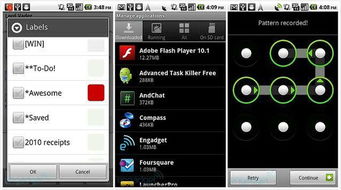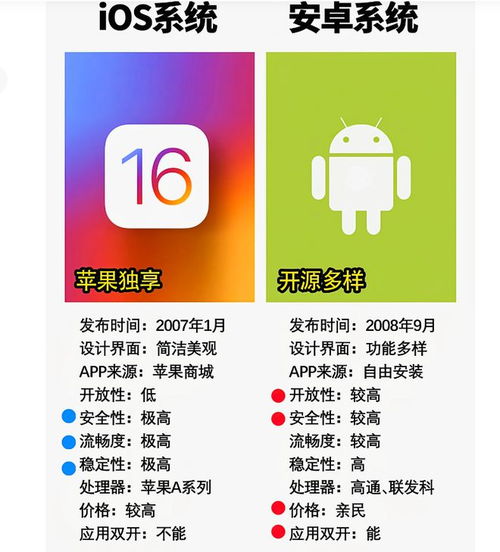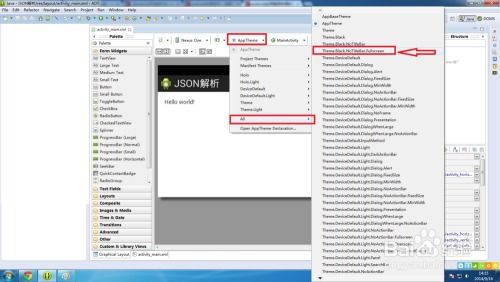亲爱的安卓开发者们,你是否曾在某个夜晚,对着电脑屏幕,为如何实现一个漂亮的横向布局而烦恼?别担心,今天我要带你一起探索安卓系统的横向布局奥秘,让你轻松驾驭各种界面设计!
一、横向布局的入门指南

首先,你得知道安卓系统中有哪些布局方式。常见的布局方式有:LinearLayout、RelativeLayout、FrameLayout、TableLayout、GridLayout和ConstraintLayout。其中,LinearLayout和RelativeLayout是最常用的布局方式。
1. LinearLayout

LinearLayout就像一条长长的走廊,里面的控件可以并排或垂直排列。要实现横向布局,你需要将LinearLayout的orientation属性设置为horizontal。
```xml
android:layout_width=\match_parent\
android:layout_height=\wrap_content\
android:orientation=\horizontal\>
android:layout_width=\wrap_content\
android:layout_height=\wrap_content\
android:text=\按钮1\ />
android:layout_width=\wrap_content\
android:layout_height=\wrap_content\
android:text=\按钮2\ />
android:layout_width=\wrap_content\
android:layout_height=\wrap_content\
android:text=\按钮3\ />
2. RelativeLayout

RelativeLayout是一种相对布局方式,控件可以相对于其他控件或父容器进行定位。要实现横向布局,你可以使用RelativeLayout的属性来控制控件的位置。
```xml
android:layout_width=\match_parent\
android:layout_height=\wrap_content\>
android:id=\@+id/button1\
android:layout_width=\wrap_content\
android:layout_height=\wrap_content\
android:text=\按钮1\
android:layout_alignParentStart=\true\ />
android:id=\@+id/button2\
android:layout_width=\wrap_content\
android:layout_height=\wrap_content\
android:text=\按钮2\
android:layout_toEndOf=\@id/button1\ />
android:id=\@+id/button3\
android:layout_width=\wrap_content\
android:layout_height=\wrap_content\
android:text=\按钮3\
android:layout_toEndOf=\@id/button2\ />
二、横向布局的进阶技巧
1. 控件间距
在横向布局中,你可能需要调整控件之间的间距,使界面看起来更加美观。你可以使用margin属性来实现。
```xml
android:layout_width=\wrap_content\
android:layout_height=\wrap_content\
android:text=\按钮\
android:layout_marginLeft=\10dp\
android:layout_marginRight=\10dp\ />
2. 控件对齐
为了使横向布局更加整齐,你可以使用gravity属性来控制控件的对齐方式。
```xml
android:layout_width=\wrap_content\
android:layout_height=\wrap_content\
android:text=\按钮\
android:gravity=\center\ />
3. 嵌套布局
有时候,你可能需要在横向布局中嵌套其他布局。这时,你可以使用RelativeLayout或其他布局方式来实现。
```xml
android:layout_width=\match_parent\
android:layout_height=\wrap_content\
android:orientation=\horizontal\>
android:layout_width=\wrap_content\
android:layout_height=\wrap_content\>
android:layout_width=\wrap_content\
android:layout_height=\wrap_content\
android:text=\按钮1\ />
android:layout_width=\wrap_content\
android:layout_height=\wrap_content\
android:text=\按钮2\
android:layout_toEndOf=\@id/button1\ />
android:layout_width=\wrap_content\
android:layout_height=\wrap_content\>
android:layout_width=\wrap_content\
android:layout_height=\wrap_content\
android:text=\按钮3\ />
android:layout_width=\wrap_content\
android:layout_height=\wrap_content\
android:text=\按钮4\
android:layout_toEndOf=\@id/button3\ />
三、横向布局的实战案例
现在,让我们来做一个简单的横向滑动菜单吧!
1. 创建一个LinearLayout布局,设置orientation为horizontal。
2. 在LinearLayout中添加多个Button控件,并设置它们的text属性。
3. 使用RecyclerView来实现横向滑动效果。
```xml
android:layout_width=\match_parent\
android:layout_height=\wrap_content\
android
